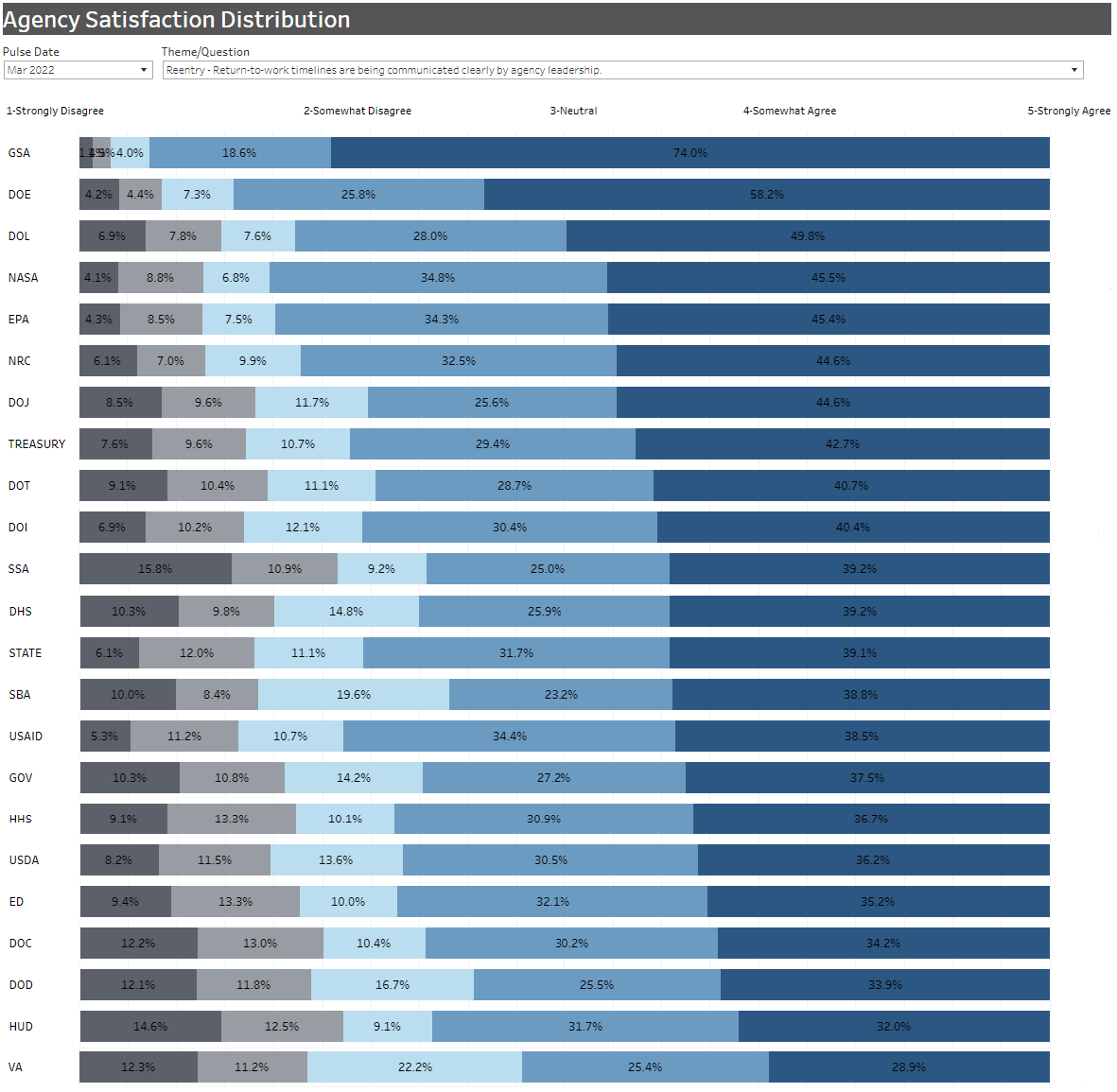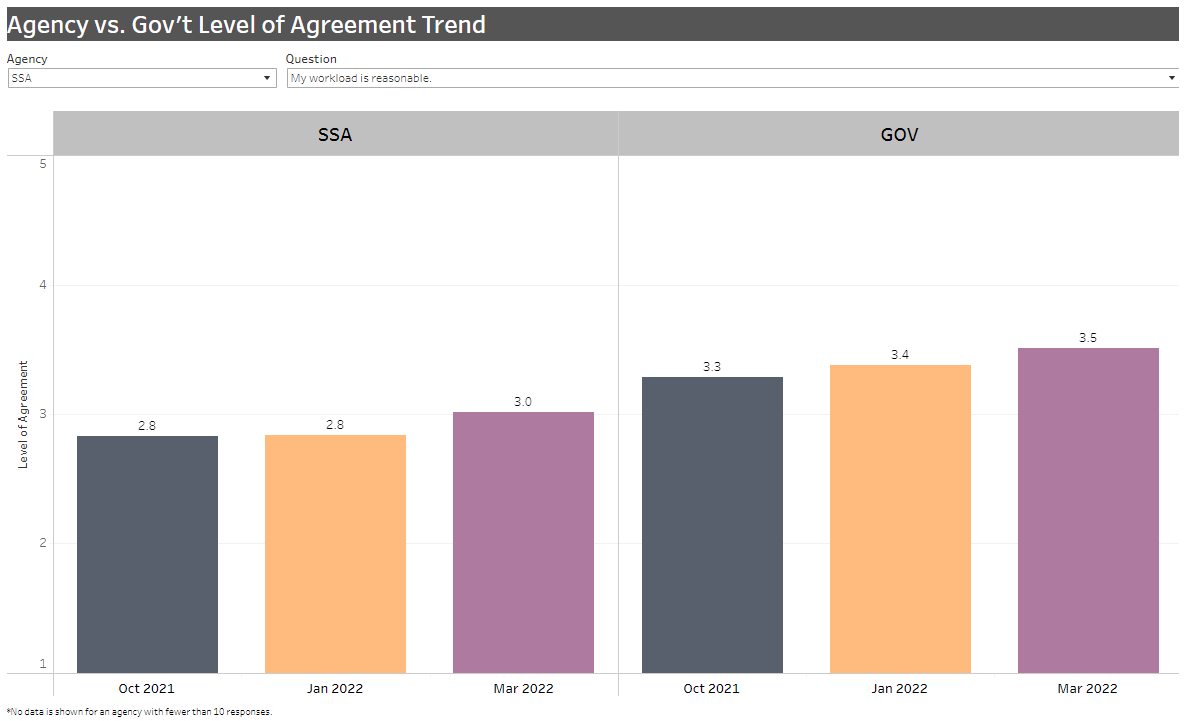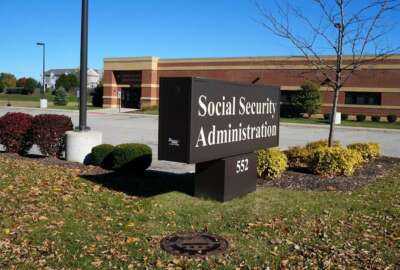SSA acting commissioner ‘concerned’ about employee exhaustion, lack of engagement
As agency staffing challenges continue, the Social Security Administration is among the lowest ranked agencies on the latest pulse survey results.
Social Security Administration Acting Commissioner Kilolo Kijakazi is responding to some of the worst results in the third round of federal pulse surveys.
Poor feedback has continued for SSA since the first round of pulse surveys, including results for lack of engagement and poor work-life balance. The Office of Management and Budget, along with the Office of Personnel Management and General Services Administration, released the latest round of governmentwide results on April 28.
In response, Kijakazi wrote an email, obtained by Federal News Network, to all SSA employees saying she is “concerned” about high rates of exhaustion that employees report feeling at work, as well as seeing employees not feeling supported when it comes to equity and career advancement.
Out of the 24 agencies in the survey, SSA ranked among the lowest on topics like employee engagement and return-to-office communications.
The agency is evaluating how to address the results, including looking at increasing telework opportunities, SSA press officer Mark Hinkle told Federal News Network.
Hinkle in part attributed the poor scores to increasing workloads, which stem from the largest deficit of Social Security Administration employees in over 25 years.
“This will increase our customers’ wait times for service, increase processing times and lead to increases in pending workloads. Our employees feel the weight of those challenges,” Hinkle told Federal News Network.
Compounding with low staffing issues, many current SSA employees are actively looking for other employment, Angela Digeronimo, regional vice president for American Federation of Government Employees Council 220, told Federal News Network. Second only to the Department of Housing and Urban Development, 42.2% of SSA pulse survey respondents strongly agreed that they would take a job elsewhere if it offered more workplace flexibilities or remote options.
Digeronimo said many employees are looking to leave in part because the workload is not reasonable.
“The other reason employees are looking to exit the agency is work-life balance. The agency refuses to embrace technology in a way that would make processing work more efficient while providing a better customer service experience for the American public,” Digeronimo said.
Further adding to the issue, AFGE said getting new SSA employees up to speed is a lengthy process. Ralph de Juliis, president of AFGE Council 220, which represents about 27,000 SSA field office and teleservice center employees, told Federal News Network that due to the technical nature of the work, it takes about two years for new SSA employees to become fully proficient.
“This is damaging to morale in the office,” de Juliis said. “It also makes retaining new hires extremely challenging, as the expectation for workload is simply not achievable in the first 12-to-18 months for even the most exceptional new hire.”
The drop in scores for the third round pulse survey is not exclusive to SSA employees. Other generally low-scoring agencies in the third round included HUD and the Department of Homeland Security.
Additionally, in the Office of Personnel Management’s 2021 Federal Employee Viewpoint Survey, the data showed a decrease in federal workforce engagement and satisfaction governmentwide.
“A big pitch that we always give with these employee viewpoint surveys is look at the data, read it, understand it and really respond to what you’re seeing within your own workforce,” OPM Director Kiran Ahuja said in an interview with Federal News Network.
Ahuja said that return-to-office plans could contribute to the drop in positive results in the 2021 FEVS.
“When you’re pulling back from what has been maximum telework posture, and there are these shifts, there are a lot of unknowns, I think it’s natural to see how that gets reflected in the survey,” Ahuja said.
The third round of pulse surveys asked 11 questions around employee engagement, agencies’ pandemic responses and equity and inclusion. The President’s Management Council launched the surveys and OMB, OPM and GSA collaborated to distribute them.
OMB, OPM and GSA distributed the survey before the agency opened its doors to the public last month, but many employees still communicated their dissatisfaction with SSA leaders’ communications and actions in return-to-office plans.
When asked about their thoughts on reentry plans, 31.9% of SSA respondents disagreed or strongly disagreed that agency leaders were protecting employees’ health, safety and wellbeing. Additionally, 26.7% of SSA employees disagreed or strongly disagreed that senior leaders were clearly communicating return-to-work timelines.

“Employees do not believe the reentry was planned with their interests, much less their best interests, at heart. That comes through loud and clear in the negative pulse results,” de Juliis said.
SSA employees also came in highest for levels of exhaustion among agencies surveyed. The percentage of SSA respondents who said they feel exhausted in the morning at the thought of another day at work has increased through every round of the survey.
Among many concerns, Kijakazi said she is encouraged to see a slight improvement in the opinion that workloads are reasonable. Although SSA’s score for workload improved this round, compared to other agencies, it’s still one of the lowest scores.

SSA ranked fifth among response rates for agencies in the third round of the survey at 35%. The governmentwide rate was 17%. That suggests employees are invested in improving the agency, Kijakazi said.
To improve SSA, including adding more employees to ease employee workload, Hinkle said a larger budget is necessary.
“Chronic underfunding is detrimental to our success and our employees’ experience. For example, the final budget this year from Congress was $850 million less than the President’s budget, requiring us to delay planned hiring, which would give relief to workers,” Hinkle said.
SSA leaders are working with the Biden administration to try to increase funding for the agency and “to make clear the very real effects of the budget we received, which drives hard choices. I am hopeful that Congress will join me in supporting you as we work to improve service,” Kijakazi said.
Although AFGE recognizes SSA has a tight budget, de Juliis said the agency’s funding is not the root cause of the problem.
“Micro-management, lack of hope, outdated systems and uncomfortable work environments are the driving factors in our low retention numbers. The only way to address those issues is to see systemic cultural change. This is one problem money alone simply can’t solve,” de Juliis said.
Kijakazi said she we will be in touch with SSA employees in the coming weeks to give more details about actions leadership is taking to address the pulse survey results.
Copyright © 2025 Federal News Network. All rights reserved. This website is not intended for users located within the European Economic Area.
Drew Friedman is a workforce, pay and benefits reporter for Federal News Network.
Follow @dfriedmanWFED






